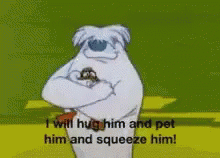To oversimplify, the main difference between the electronic media landscape then v. now is the shift from broadcasting to narrowcasting as the number of "channels" increases, and the ability to time-shift a program to consume at your leisure. I no longer have to choose between first-run
Bewitched and
Star Trek, as I can watch both. Streaming platforms serving programs sans overt commercials are another model, which don't lean on ratings but look at if a given program contributes to sign ups or keeps people signed up, which is why something as expensive as
Cowboy Netbop doesn't get picked up, because the cost of it isn't counterbalanced by subscriptions.
Commonplace access to old radio shows in 1966 was arguably not much of a thing. Sure plenty of people over a certain age would have remembered The
Green Hornet radio show, but more likely as a thing from the distant past and not something they'd have run into on Cartoon Network a decade after it originally aired.
Let's also not be too convinced that we have anything near "most" media preserved. While an accurate figure remains elusive, it's believed that the majority of all silent films are lost (
most estimates put that number at >50%), many known only from their Copyright registrations. Many TV shows from the early days of TV are gone. Lost shows include the CBC's
Space Command (only one kinescope is known to survive), virtually
everything from DuMont Network is gone, as is every episode of
The Shari Lewis Show. The major PBS affiliate in San Francisco has
zero copies of its
Turnabout women's issues series from 1978 (and it seemed lost until I recently found that the American Archive of Public Television has 51 of 52 of the episodes).
Laugh-In survives in part because the videotapes were physically cut and could not be recorded over, hence not reused.
Even for the shows that do exist, they're not all out there. Ryan mentioned
The Defenders, which was a big prestige multi-Emmy winning show in the first half of the 60s, but only the first of its four seasons is available on licensed media, with a few bootlegged straggler episodes on the internet. Often this is because a show had complicated rights issues and never really got into syndication, even if it had plenty of episodes.
As to pop culture modernity, let's not flatter ourselves. There are pop culture jokes in silent movies, but most of us are so far removed from the world that birthed them that we don't even realize a joke just flew past us (e.g. Buster Keaton mimics Felix the Cat in his film
Go West). A lot of snappy catchphrases in old Warner Bros. cartoons are plays on specific lines from popular radio shows and advertisements, and some of the characters were themselves parodies of celebrities and characters of the time (
Senator Claghorn, anyone?). Again, we just don't recognize them.




